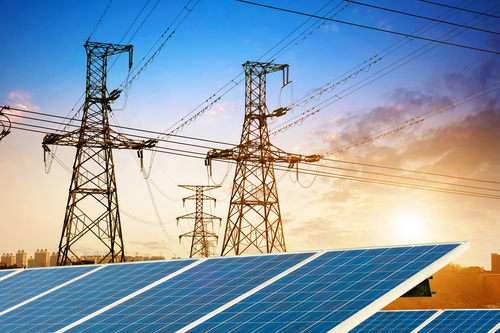U.S. House hearing focuses on supporting power sector’s efforts to build clean economy

A hearing on Capitol Hill this week focused on how the federal government can help the power sector face the dual challenge of increasing the amount of energy produced while decreasing the carbon emissions generated from that production.
During a hearing entitled, “Building a 100 percent clean economy: Solutions for the U.S. Power Sector” before the U.S. House Energy and Commerce Subcommittee on Energy, representatives from the energy sector urged lawmakers to show continued support for grid modernization, research and development, and by supporting electric vehicles and their charging infrastructure.
House Energy and Commerce Committee Chairman Frank Pallone (D-NJ) said it’s imperative that the industry work towards significantly lowering carbon emissions.
“In the power sector, there are clear, achievable ways to get to 80 percent decarbonization – but it’s the last 20 percent that will, by far, be the biggest challenge,” Pallone said in his opening remarks. “Getting to 100 percent will require a balanced portfolio of low- and zero-carbon technologies – including solar, wind and nuclear power – as well as energy storage and carbon capture technologies. Without this balanced portfolio, deep decarbonization will happen at a slower pace and at a higher cost to homeowners and businesses.”
Ralph Izzo, chairman, president and CEO of the Public Service Enterprise Group (PSEG), noted that as of 2018, PSEG has been able to reduce its greenhouse gas emissions by 45 percent from 2005 levels. The company also recently announced a long- term commitment to achieve an 80 percent reduction in carbon emissions from our generation fleet by 2046, also from 2005 levels.
Izzo said Congress can help energy providers continue making progress in reducing emissions by preserving existing zero-emitting nuclear generation. Nuclear energy provides 20 percent of the country’s electricity, but 55 percent of America’s carbon-free electricity, he noted.
“Also in the immediate, Congress can help states harness the power of utilities to deliver significant carbon emissions reduction through a massive deployment of energy efficiency,” Izzo said. Providing federal dollars to states that approve utility energy efficiency programs would be helpful, he added.
Continued federal dollars for climate-related research and development would help utilities to continue to find ways to reduce emissions, as well.
Izzo said the federal government can also help by promoting electric vehicles and implementing a charging infrastructure to support them.
Jim Matheson, chief executive officer at the National Rural Electric Cooperative Association (NRECA), agreed.
“Transportation electrification in both personal and fleet applications is an attractive policy option to reduce vehicle emissions and improve air quality in our communities,” Matheson said. “Many cooperatives have invested in charging infrastructure and consumer education and have designed rates and other incentives to encourage EV adoption. These investments, however, depend on continued federal support for EVs (while recognizing and being consistent with state law), including incentives for deployment of electric vehicles and funding for charging infrastructure, particularly in rural areas where the electric distribution equipment may also need to be upgraded.”
Matheson said NRECA supports H.R. 1166, the Utilizing Significant Emissions with Innovative Technologies (USE IT) Act, which would provide electric cooperatives and others with incentives for deploying carbon capture, utilization and support technologies. Introduced by U.S. Reps. Scott Peters (D-CA), and David McKinley (R-WV), the bill could bring down the costs for deploying CCUS technologies and spur further innovation, Matheson said.
Lee Anderson, government affairs director with the Utility Workers Union of America, said decarbonization, if done right, could benefit everyone.
“If done thoughtfully, reducing carbon emissions in the U.S. power sector can be an opportunity to create and retain high-quality jobs, preserve communities and combat climate change,” he said in his written testimony.
